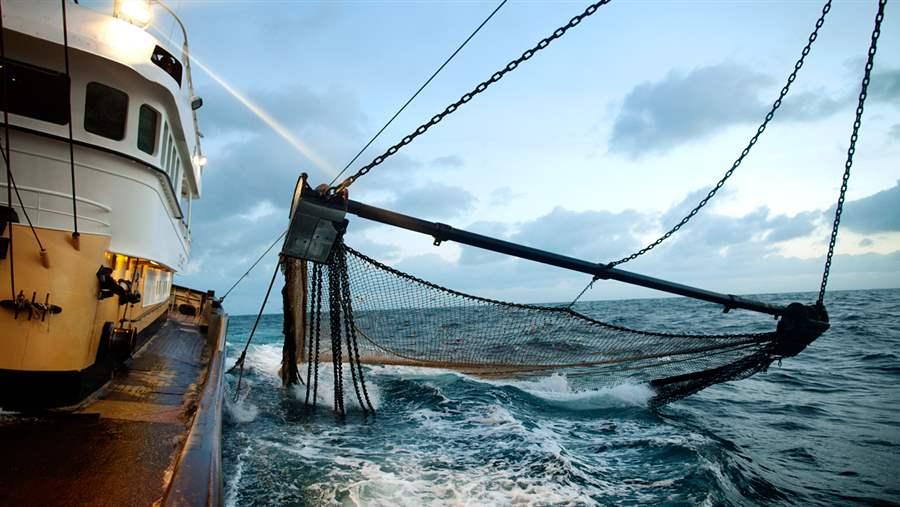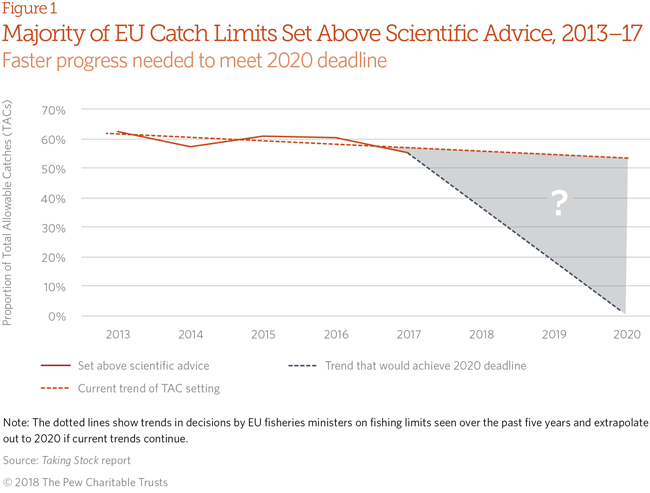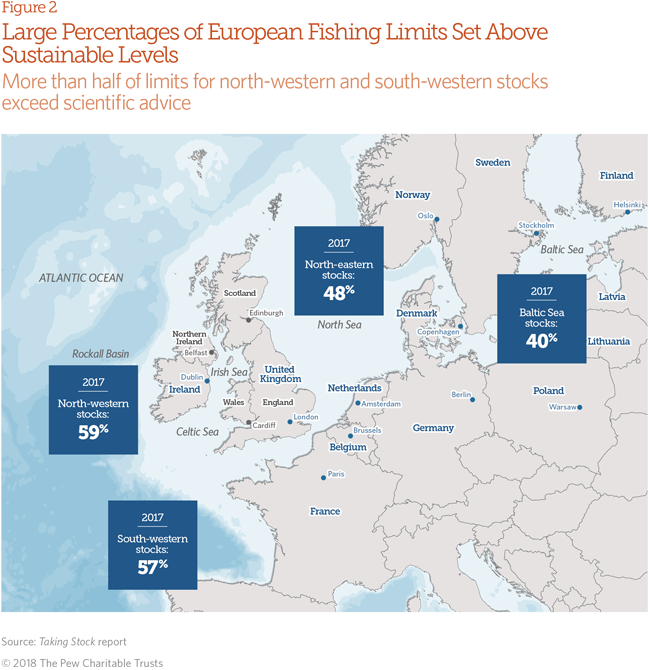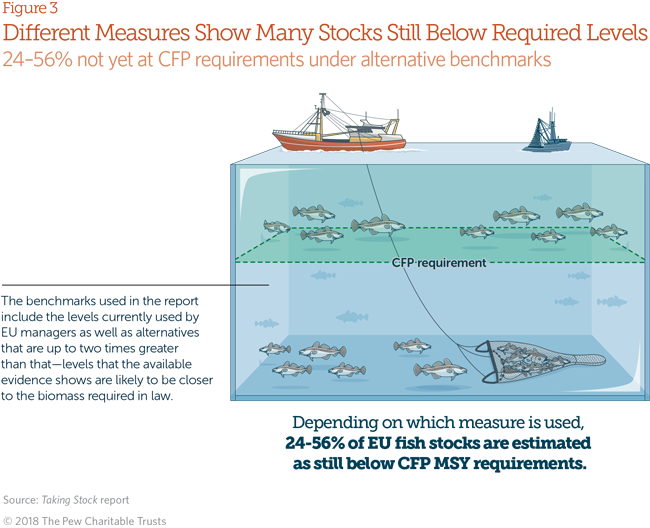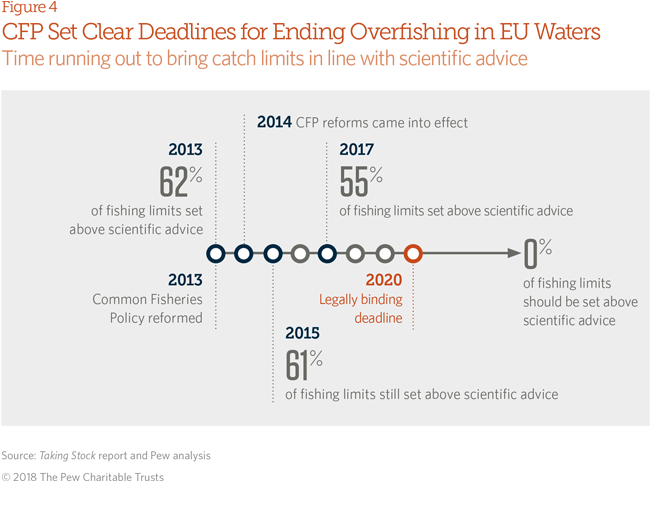EU Still Far From Ending Overfishing in Its Waters
Report shows swift action needed to meet CFP sustainable fishing goal by 2020
Overview
As a 2020 deadline to end overfishing in European Union waters approaches, a new report measures the progress that fisheries ministers have made in setting sustainable fishing limits to implement the EU’s reformed Common Fisheries Policy (CFP), which took effect in 2014.
In 2017, 55 percent of fishing limits were set above scientific advice, according to the report, Taking Stock.1 Fisheries consultancy Poseidon Aquatic Resource Management Ltd. conducted the study for The Pew Charitable Trusts. The analysis found that fisheries ministers have set more than half of catch limits above scientific advice in recent years, making limited progress toward the CFP’s requirement to end overfishing by 2015 where possible and by 2020 at the latest.2
Each year, the International Council for the Exploration of the Sea (ICES), an international scientific organisation, provides advice on the highest levels of catches that would ensure the sustainable exploitation of EU fish stocks. But since reaching agreement on the CFP in 2013, fisheries ministers have consistently set a majority of fishing limits—referred to as the total allowable catch, or TAC—at levels above the ICES advice.
Regional differences
Overfishing varies in Europe’s regions. The data for 2017 show that a large proportion of fishing limits are set too high throughout north-western European waters.
Missing Information
Few EU fish stocks, currently less than 10 percent, have official scientific estimates of their levels of biomass—the combined weight of all the fish of one specific stock—relative to CFP objectives. The CFP requires that fish stocks be recovered above biomass levels capable of producing the maximum sustainable yield (MSY)—that is, the biomass level that is able to produce the largest catch without depleting the population. When available, these estimates are provided by ICES.
The Taking Stock report attempts to address this lack of information by developing alternative estimates that are likely to be closer to the CFP objectives.
Pew analysis of report data finds progress slow
The CFP, which entered into force at the start of 2014, sets a legally binding deadline for an end to overfishing “by 2015 where possible, and on a progressive, incremental basis at the latest by 2020 for all stocks.”
The task of ending overfishing in Europe should be nearly complete at this point. Instead, data consistently show an alarming proportion of fishing limits being set too high and stocks on a slow path to recovery.
Decisions to set fishing limits in line with scientific advice in the next three years are critical if the EU and its member states are to achieve the environmental, social, and economic benefits that come from sustainably managed fisheries.
Endnotes
- Poseidon Aquatic Resources Management Ltd., “Taking Stock: Progress Towards Ending Overfishing in the European Union” (2017), http://www.consult-poseidon.com/fishery-reports/Poseidon_Taking_Stock_2017.pdf.
- European Union, “Regulation (EU) No 1380/2013 of the European Parliament and of the Council of 11 December 2013 on the Common Fisheries Policy, amending Council Regulations (EC) No 1954/2003 and (EC) No 1224/2009 and repealing Council Regulations (EC) No 2371/2002 and (EC) No 639/2004 and Council Decision 2004/585/EC,” Official Journal of the European Union (2017), http://eur-lex.europa.eu/legal-content/EN/TXT/PDF/?uri=CELEX:32013R1380&qid=1502977777888&from=EN.
